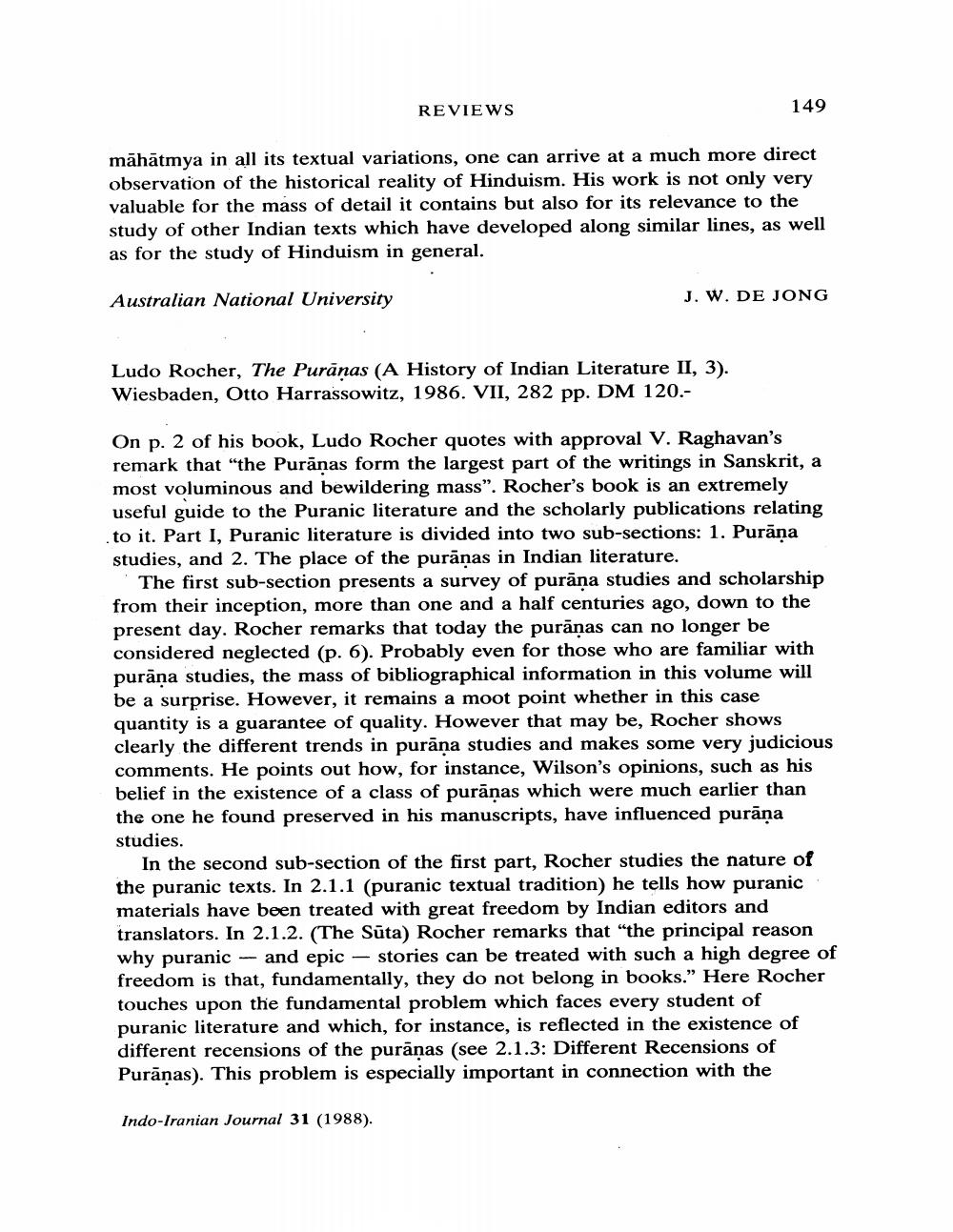Book Title: Book Reviews Author(s): J W De Jong Publisher: J W De Jong View full book textPage 7
________________ REVIEWS 149 māhātmya in all its textual variations, one can arrive at a much more direct observation of the historical reality of Hinduism. His work is not only very valuable for the mass of detail it contains but also for its relevance to the study of other Indian texts which have developed along similar lines, as well as for the study of Hinduism in general. Australian National University J. W. DE JONG Ludo Rocher, The Purānas (A History of Indian Literature II, 3). Wiesbaden, Otto Harrassowitz, 1986. VII, 282 pp. DM 120. On p. 2 of his book, Ludo Rocher quotes with approval V. Raghavan's remark that "the Purānas form the largest part of the writings in Sanskrit, a most voluminous and bewildering mass”. Rocher's book is an extremely useful guide to the Puranic literature and the scholarly publications relating to it. Part I, Puranic literature is divided into two sub-sections: 1. Purāņa studies, and 2. The place of the purānas in Indian literature. The first sub-section presents a survey of purāņa studies and scholarship from their inception, more than one and a half centuries ago, down to the present day. Rocher remarks that today the purānas can no longer be considered neglected (p. 6). Probably even for those who are familiar with purāna studies, the mass of bibliographical information in this volume will be a surprise. However, it remains a moot point whether in this case quantity is a guarantee of quality. However that may be, Rocher shows clearly the different trends in purāņa studies and makes some very judicious comments. He points out how, for instance, Wilson's opinions, such as his belief in the existence of a class of purānas which were much earlier than the one he found preserved in his manuscripts, have influenced purāņa studies. In the second sub-section of the first part, Rocher studies the nature of the puranic texts. In 2.1.1 (puranic textual tradition) he tells how puranic materials have been treated with great freedom by Indian editors and translators. In 2.1.2. (The Sūta) Rocher remarks that "the principal reason why puranic - and epic - stories can be treated with such a high degree of freedom is that, fundamentally, they do not belong in books." Here Rocher touches upon the fundamental problem which faces every student of puranic literature and which, for instance, is reflected in the existence of different recensions of the purānas (see 2.1.3: Different Recensions of Purānas). This problem is especially important in connection with the Indo-Iranian Journal 31 (1988).Page Navigation
1 ... 5 6 7 8 9 10 11 12 13 14 15 16 17 18 19 20 21 22 23 24
